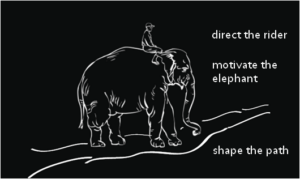Are you Going Mental?
Ok, phew – you’ve landed. You got past the headline. Now you may be wondering what this post is all about. An article on crazies. No – though I did like the movie by that title.
Going mental is what you need to do more of. Nobody gets harmed, unlike in the movie. When you get stuck, you lack a mental model of how to proceed, similar to a 2nd grader trying to tackle an algebra problem or a chef trying to perform brain surgery. Let the fun begin – ask a preschooler to explain how a phone works or to plan the next family vacation and see what unfolds.
As individuals we sometimes face challenges that call us to act but the situation hasn’t provided us with any mental models of how to proceed. We face this in our personal lives as well as our professional lives. Though many situations we face in our personal lives might be predictable – as many have experienced them before – they are nonetheless new to us at the moment e.g. love, death, marriage, divorce, childbirth, terminal illness, job loss, 50th wedding anniversary, accidents, graduation, etc.
Mental models are all around us. We use maps to find places, we have mental models of what grocery stores look like so we can navigate aisles and make purchases. We also have mental models around how to wear glasses, put away clean dishes, and cut a piece of wood using a handsaw. We get visual cues from those that we observe doing those same things. But, what about something abstract like change. You can’t physical see it and it unfolds over time. What is your mental model for change?
It turns out that a pretty good mental model for change involves a big fat elephant, a tiny rider, and the path below them.
Psychologists have discovered that our minds are ruled by two sometimes competing systems – the rational mind (the rider) and the emotional mind (the elephant).
When the rider directs a motivated elephant along a well shaped path – change happens easily. Remove any one element and change is halted – you might even get unintended consequences. To learn more about change using this mental model read Switch: How to Change Things When Change is Hard. We did. We like it and we think you will to. Good luck with your change efforts and if you need some help give us a shout.
about the author

Gregory Olson is a consultant, speaker, and author of The Experience Design BLUEPRINT: Recipes for Creating Happier Customers and Healthier Organizations. His latest book project is l’ impossi preneurs: A Hopeful Journey Through Tomorrow.
Learn more and connect with Greg on Linkedin, Facebook, or Twitter.
Chapters in The Experience Design Blueprint that especially pertain to this post include:
- Chapter 8: The Promise Delivery Systems
- Chapter 12: The Three Psychological Zones
- Chapter 13: Taking Flight
See a book summary. Read the book reviews on Amazon. Read The Experience Design Blueprint on Kindle or any device using the free Kindle Reader application or read the full color print edition. Already read it? Please connect and let me know.


